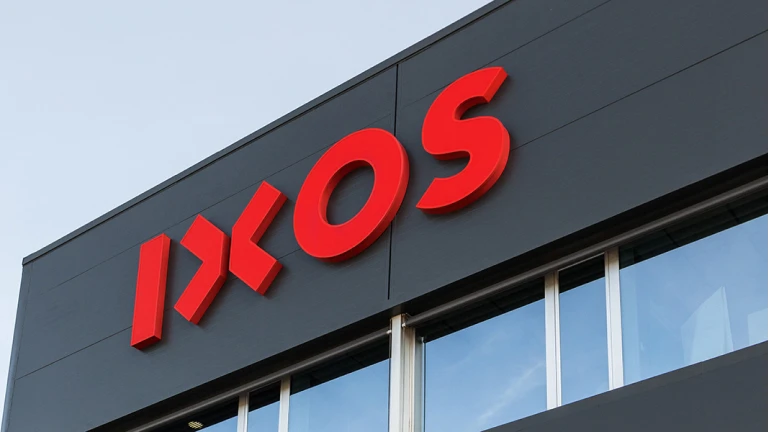Table of contents
A good sales commission structure is more than just a payment method. It is key to boosting or hurting your team’s performance. A good sales commission structure can increase motivation. It helps align sales incentives with business goals. This can lead to better overall results. Whether you’re a startup or a seasoned enterprise, understanding how to build the most effective sales commission structure is key to achieving consistent sales performance.
This blog will dive deep into the mechanics of sales commission structures, how they impact sales performance, and the different types you can use to drive better results while keeping your team motivated. We will also discuss how quotas, compensation, and on-target earnings (OTE) work together. This creates a clear framework that aligns individual sales incentives with the company’s goals.
What is a Sales Commission Structure?
A sales commission structure defines how companies compensate salespeople for their performance, typically based on achieving specific sales goals. It outlines how much a salesperson will earn based on their sales performance, whether that’s a percentage of sales revenue or a flat-rate commission for hitting a quota. This structure plays a vital role in determining how well your sales team performs and, ultimately, how your company meets its revenue targets.A thoughtfully designed sales commission structure incentivizes salespeople to hit their quotas, align with company goals, and ensure their on-target earnings (OTE) reflect their contributions. The right structure doesn’t just reward sales; it drives the right behavior.
Why a Sales Commission Structure Matters
Choosing the right sales commission structure is one of the most powerful levers you can use to influence your team’s sales performance. Salespeople are naturally competitive and motivated by financial rewards, and the right commission plan can push them to exceed their targets. On the other hand, a poorly designed sales commission structure can lead to frustration, demotivation, and even turnover.
The right sales commission structure helps with:
- Motivation: It incentivizes your salespeople to work harder, knowing that their earnings are tied to their performance.
- Alignment: It ensures that sales incentives are aligned with your company’s goals, pushing the team to prioritize the right deals.
- Retention: A fair, transparent commission structure helps retain top talent by making sure high performers are appropriately compensated.
- Sales Performance: When salespeople are rewarded based on how much they sell, they are naturally driven to perform better.
Key Components of a Sales Commission Structure
1. Sales Quotas
Sales quotas are an integral part of any sales commission structure. They define the minimum sales performance required to earn commissions. For instance, a company might set a quota for selling a certain number of products or achieving a specific revenue target within a given timeframe.. A well-set quota challenges salespeople without being unattainable, and this balance ensures sustained motivation.
For example, if a company sets a quota of $100,000 in new business sales each quarter, a salesperson may receive a commission only after meeting or exceeding that quota. The structure might then include additional incentives for surpassing the goal, creating a tiered system that keeps sales reps aiming higher.
2. On-Target Earnings (OTE)
On-target earnings (OTE) refer to the total expected earnings for a salesperson if they meet their sales quota. Typically, OTE is composed of base salary plus variable compensation (the commission). The balance between these two components can vary significantly based on the sales role and industry.
For example, a salesperson with a $50,000 base salary and the potential to earn $50,000 in commission would have an OTE of $100,000. Companies must ensure that their OTE is competitive enough to attract top talent while maintaining financial viability.
3. Compensation and Sales Incentives
Sales incentives are at the core of any sales commission structure. They provide financial rewards based on performance and are key to motivating salespeople. The compensation component of a commission structure can take many forms, including percentage-based commissions, flat-rate commissions, or a hybrid approach.
For instance, in a percentage-based commission plan, a salesperson might earn 5% of every sale they close. In a flat-rate commission plan, they could receive a fixed amount, such as $500, for each new deal. Companies may also choose to implement hybrid models that combine elements of both approaches, especially for teams working on varied product lines or across different sales cycles.

Types of Sales Commission Structures
A solid understanding of various commission structures can help you choose the best model for your team and business objectives. Here are 8 common types of sales commission structures and an example for each one:
1. Straight Commission
In a straight commission structure, salespeople earn a commission based solely on the sales they generate, without receiving any base salary. This model works well for industries with high-ticket sales and longer sales cycles, such as real estate or large B2B deals. While it offers the potential for high earnings, it also introduces financial risk for the salesperson, making it less suitable for individuals who prefer steady income.
For example, a real estate agent may earn 5% of the total property sale price. If they close a $500,000 property, they would take home $25,000 in commission.
2. Base Salary + Commission
One of the most common sales commission structures is the base salary plus commission model. Salespeople receive a fixed base salary, along with commissions for the deals they close. This structure provides financial stability while still incentivizing performance. The ratio between base salary and commission can vary, with higher-risk industries offering larger commissions and lower base salaries.
A typical example would be a software sales rep earning a base salary of $50,000 annually, plus 5% commission on each sale. If they close $200,000 in sales, they’ll earn an additional $10,000 in commission on top of their base salary.
3. Tiered Commission
A tiered commission structure rewards salespeople with progressively higher commission rates as they achieve greater sales milestones. This motivates reps to aim for higher quotas, as the more they sell, the more they earn.
For example, they might earn 5% commission on sales up to $100,000, 8% on sales from $100,001 to $200,000, and 10% on anything above that.
A tiered system is especially effective when you want to encourage your team to push beyond their comfort zones and exceed standard sales targets.
4. Revenue-based Commission
In a revenue-based commission structure, the commission is calculated based on a percentage of the revenue generated by each sale. This structure is often used in B2B or SaaS environments, where the value of a sale is directly tied to recurring revenue or contract value.
For example, a SaaS sales rep may earn a 7% commission on all subscription sales they close. If a deal generates $100,000 in annual revenue, the rep would earn $7,000 in commission.
5. Gross Margin Commission
Unlike revenue-based commission, a gross margin commission structure rewards sales reps based on the profitability of each sale rather than the total revenue. This encourages reps to close high-margin deals rather than just focusing on volume. This model works well for industries where maintaining profitability is crucial, such as retail or wholesale.
For instance, if a salesperson closes a deal with a 50% margin on a $100,000 sale, and their commission is 10% of the gross margin, they’ll earn $5,000 in commission.
6. Residual Commission
Residual commission structures are popular in industries that rely on recurring revenue, such as insurance or SaaS. In this structure, sales reps earn ongoing commissions as long as their clients remain active customers. This incentivizes reps not only to close deals but also to ensure customer satisfaction and retention over time.
For example, a salesperson might earn 10% of a customer’s monthly subscription fee for as long as they stay subscribed. If the subscription fee is $1,000 per month, the salesperson would receive $100 per month in residual commissions.
7. Draw Against Commission
In a draw against commission structure, salespeople receive an advance on their future commissions to provide some level of income stability, especially during slow periods. This “draw” acts as a loan that is repaid through future commissions earned. If a salesperson doesn’t earn enough commission to cover the draw, they are responsible for repaying the difference.
For example, a company might provide a $3,000 monthly draw. If the rep earns $5,000 in commission that month, they keep the difference. If they only earn $2,000 in commission, they’ll owe $1,000 back to the company.
8. Bonus-based Commission
A bonus-based commission structure offers sales reps bonuses for hitting specific targets or milestones, such as reaching 120% of their sales quota. These bonuses are often tied to broader company objectives, such as launching a new product or entering a new market, and can help drive focused sales efforts.
For instance, a company may offer a $5,000 bonus to any sales rep who exceeds their quarterly sales target by 20%. This encourages reps to go above and beyond their standard quota to earn extra rewards.
How to Choose the Right Sales Commission Structure
Choosing the right sales commission structure needs careful analysis. You should consider your company’s goals, the sales environment, and your team’s unique needs. Here are a few key considerations when deciding which model works best for your organization:
1. Business Goals
Your sales commission structure should reflect your overall business objectives. If you’re focused on rapid customer acquisition, you might prioritize structures that reward new business rather than retention. On the other hand, if you’re in an industry where maintaining long-term relationships is critical, a residual or bonus-based commission plan may be more appropriate.
2. Sales Cycle Length
Industries with longer sales cycles, such as enterprise B2B or real estate, might benefit from structures like straight commission or draw against commission, which offer the potential for high payouts. Shorter sales cycles, common in retail or consumer goods, might favor simpler models like salary + commission or tiered commission.
3. Team Dynamics
The size and experience level of your sales team can also impact which structure you choose. More experienced salespeople might thrive under straight commission or tiered structures, while less experienced reps might need the security of a base salary + commission plan.
4. Profit Margins
In industries with slim profit margins, a gross margin commission structure can help protect profitability by rewarding salespeople based on the profitability of the deal, not just the size of the sale.
Best Practices for Creating a Sales Commission Structure
- 1. Tailor to Your Business Goals A one-size-fits-all sales commission structure rarely works. Instead, design your plan to support your specific business goals. For instance, if your company focuses on acquiring new customers, you might offer higher commissions on new business deals compared to renewals.
- 2. Ensure Quotas are Realistic and Challenging Your sales quotas should push your team without demotivating them. Setting unrealistic quotas can frustrate even the best salespeople, leading to burnout or attrition. Quotas should be based on past performance data and market conditions to create targets that are both fair and motivating.
- 3. Provide Clear Visibility into Compensation Salespeople want to know how their efforts translate into compensation. Your sales commission structure should be clear and simple. This way, reps can see how their performance affects their pay. This visibility increases motivation and accountability.
- 4. Incorporate Real-Time Tracking Real-time tracking tools that show sales performance and earnings help keep salespeople on track. With clear visibility into their progress towards quotas and earnings, they can adjust their strategies in real-time to close more deals and hit their OTE.
Examples of Sales Commission Structure in Action
Let’s take a company that sells SaaS products to small businesses. The company implements a tiered commission structure where sales reps earn 5% commission on deals up to $50,000 in revenue and 10% on deals over $50,000. This structure incentivizes reps to close higher-value deals and work toward bigger contracts. Additionally, the company provides a base salary of $40,000 to ensure stability, with an OTE of $100,000.
Another example might involve a car dealership that uses a straight commission model. Sales reps earn a 10% commission on the profit of each car they sell. Since car prices vary widely, the gross margin commission structure keeps sales reps focused on profitability rather than simply moving inventory.
How Remuner Can Help You Optimize Your Sales Commission Structure
Managing a sales commission structure can quickly become complex, especially as your team grows and business objectives evolve. This is where Remuner comes in. Remuner’s platform simplifies the process by automating all aspects of your sales commission plans, from quota setting to payout calculations. Our system integrates effortlessly with your existing tools—CRMs, ERPs, and more—allowing you to create and manage any sales commission structure you need.
With real-time dashboards, your sales team gets full visibility into their performance, quotas, and compensation, helping them stay motivated and focused. Our AI sales coach gives personalized insights and feedback. This helps each team member improve their performance and exceed their goals.
By reducing administrative tasks and offering data-driven insights, Remuner helps you create better compensation plans. These plans align with your business goals and boost top sales performance.





